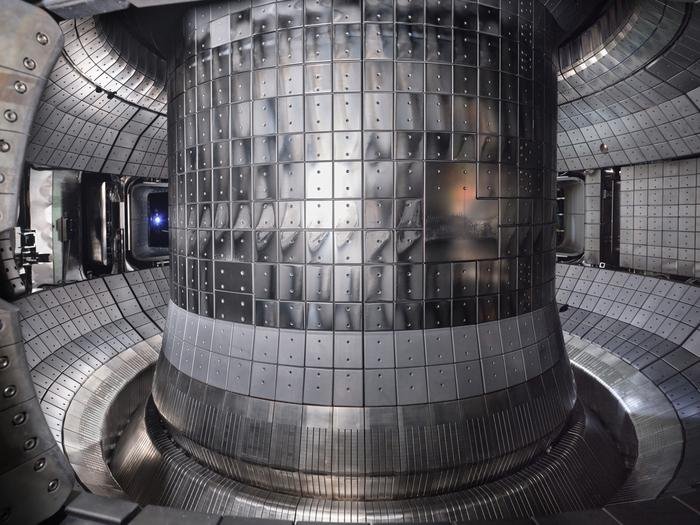Recently, a team of scientists from South Korea achieved this: Break the energy production record by producing a 100 million degree plasma ball for approximately 50 seconds. The experiment is part of Korea’s Advanced Superconducting Tokamak Research (KSTAR) and used one of the most advanced fusion reactors on the planet. No wonder its nickname is Korean artificial sun.
Scientists explain that new components placed in the reactor allow temperature recording; He managed to stay almost 20 seconds longer than the previous record. The reactor remained open for exactly 48 seconds.
Researchers believe that testing KSTAR’s new components will open the doors to the International Thermonuclear Experimental Reactor (ITER); This may be the largest fusion reactor of its kind in the world.
KSTAR’s record was revealed by the Korean Fusion Energy Institute (KFE). When the reactor managed to reach a temperature of about seven times the temperature of the Sun. The team is currently reviewing data from the latest experiments to understand all the variables and thus ensure that a study delivers all the data that leads to the final results.
“Although this is the first experiment carried out in the environment of new tungsten deflectors, extensive hardware testing and campaign preparation enabled us to achieve results in a short time exceeding previous KSTAR records. To achieve the ultimate goal of the KSTAR operation, we aimed to sequentially improve the performance of the heating and current drive devices and at the same time provide high-performance, We plan to secure the key technologies required for long pulse plasma operations,” said KSTAR research center director. , Si-Woo Yoon.
100 million degree nuclear and plasma reactor
As KFE High Performance Scenario Research Team plasma physicist Hyeon-seon Han said: The ultimate goal is to produce a plasma that has a temperature of 100 million degrees and remains active for more than 300 seconds. — they expect this to happen in mid-2026.
In other words, scientists plan for the KSTAR reactor to release an impressive amount of energy in about six times longer than the current record.
KFE also revealed that KSTAR can reach high containment mode (H mode) for approximately 102 seconds. One of the reasons for this possibility was that the reactor was upgraded with tungsten diverters. A detail that provides significant advantages in processes involving high temperatures..
“KSTAR’s ultimate goal is to achieve 300 seconds of plasma operation, where ion temperatures exceed 100 million degrees. To achieve this goal, the KSTAR team is focusing on fundamental research areas as well as improving the performance of the device. This includes the installation of additional tungsten plasma components and artificial technology to increase device performance.” “It also includes providing real-time feedback control using intelligence technology.” It was announced in an official statement.
Did you like the content? Stay up to date with more studies on nuclear energy at TecMundo. If you wish, take the opportunity to understand how Russia and China plan to build a nuclear reactor on the Moon.
Source: Tec Mundo
I’m Blaine Morgan, an experienced journalist and writer with over 8 years of experience in the tech industry. My expertise lies in writing about technology news and trends, covering everything from cutting-edge gadgets to emerging software developments. I’ve written for several leading publications including Gadget Onus where I am an author.












